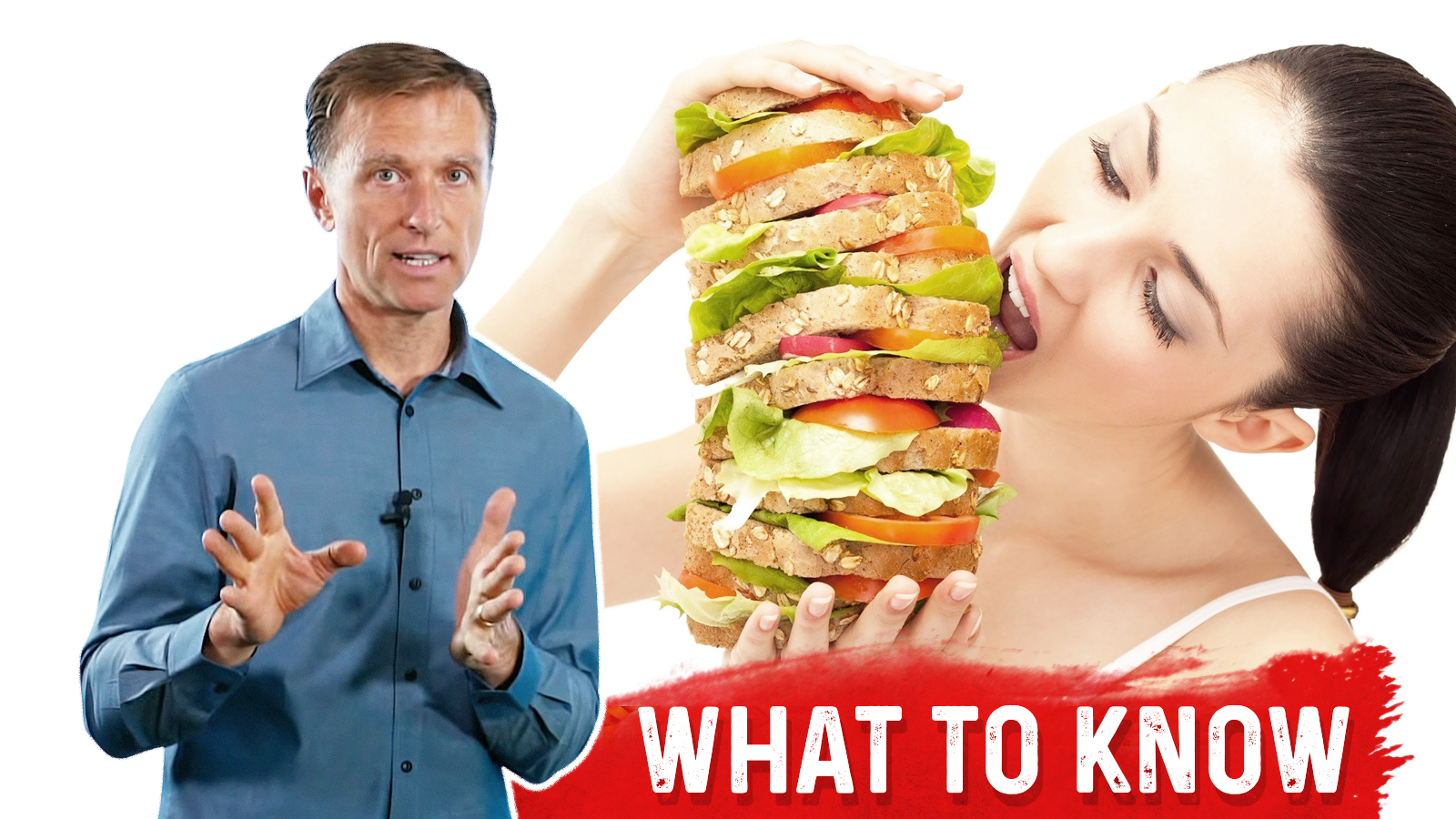Ring after a period of starvation -true starvation, needs to be handled carefully.
Y'all need to read up on what Doctors say.
"Refeeding syndrome" is a thing. Your organs can shut down if you do it wrong.
So you’ve been fasting for several days. Now what? Let’s talk about how to do refeeding after a prolonged fast in a way that prevents harmful side effects.

www.drberg.com
Prolonged Fasting Refeeding is a complex journey.
Navigating it correctly can be the difference between reaping health benefits and falling prey to dangerous complications.
The transition from fasting back to normal eating, often called prolonged fasting refeeding, requires careful planning and execution.
Understanding this process is crucial for anyone venturing into extended periods of fasting.
Understanding Refeeding Syndrome
Refeeding syndrome is a medical condition that can occur after an extended fast or long-term calorie restriction. This severe and potentially fatal phenomenon happens when you start to increase your calorie intake, consuming larger meals after a period of fasting.
In the refeeding process, carbohydrate metabolism becomes active again as food reintroduction triggers it. The body transitions from burning fat for energy during fasting to using carbohydrates once more.
This shift can cause severe electrolyte imbalances and fluid shifts, which may lead to complications like heart failure or seizures if not managed properly.
Nutrient Deficiency: A Key Factor
A crucial factor contributing to refeeding syndrome is nutrient deficiency developed during prolonged periods without food intake - fasting periods.
Studies have shown that hypophosphatemia occurs when nutrients such as phosphorus and potassium are rapidly depleted due to their use in glucose (sugar) metabolization upon resuming eating habits post-fasting phase.
Hypophosphatemia refers to dangerously low levels of these vital minerals in the bloodstream, forming one aspect of what we know today as 'refeeding syndrome.'
Symptoms Of Refeeding Syndrome To Watch Out For
- If you've been practicing intermittent or continuous forms of extended fasting, being able to identify physical signs associated with the onset of refeeding syndrome early on could be lifesaving.
- Familiarizing yourself with typical symptoms, including weakness caused by muscle loss during the fast, bloating resulting from water retention, and heart palpitations stemming from electrolyte imbalance, will help prevent further health deterioration related to the disorder.
- Besides physical indicators, there are psychological ones that need attention, especially since they impact overall well-being significantly, according to research.
Recognizing Symptoms of Refeeding Syndrome
Identifying the symptoms associated with the refeeding syndrome is vital for those who engage in extended fasting or long-term calorie restriction. Early detection can mitigate severe complications and promote a healthier transition to regular eating habits.
Identifying Physical Signs
In physical indicators, several signs could hint at the onset of refeeding syndrome during your post-fasting period. For instance, weakness may become evident as your body recalibrates its carbohydrate metabolism after an extended fast.
This bloating often occurs because you're beginning to consume larger meals again after a phase where food intake was significantly reduced.
Apart from these symptoms, heart palpitations are also indicative signals that should not be overlooked.
These occur when there's a sudden shift in electrolytes within your system - something commonly observed when transitioning from fasting to standard dietary patterns.
Understanding Psychological Indicators
- Mental confusion: Confusion may arise due to fluctuations in blood sugar levels resulting from changes made following an extended fast.
- Mood swings: Mood alterations are common occurrences while breaking prolonged periods without food consumption and gradually reintroducing foods into one's diet regime.
Remember: While experiencing discomfort upon resuming the eating routine is typical (especially if it followed an extensive fasting period), any persistent distress should prompt immediate medical attention.
In essence, recognizing physical and psychological signs related to refeeding syndrome will allow individuals to practice intermittent or prolonged fasting techniques to avoid unnecessary health risks with improper dietary transitions post-fast.
Unraveling the Role of Nutrient Deficiencies in Refeeding Syndrome
The onset and seriousness of refeeding syndrome, a disorder that can appear after long stretches of fasting, are often associated with pre-existing nutrient shortages.
These nutritional gaps are crucial for understanding this potentially dangerous phenomenon.
Potassium and Phosphorus: Essential Elements at Risk During Fasting
Within our bodies' complex systems, potassium holds significant sway over fluid balance regulation, nerve signal transmission, and muscle contraction coordination.
When an individual embarks on an extended fast without adequate potassium intake or reserves, symptoms such as fatigue or heart palpitations may occur during refeeding.
Akin to its elemental counterpart, potassium, phosphorus is vital in our bodily functions - particularly energy production and bone health maintenance.
Extended calorie restriction through prolonged fasting could substantially decrease phosphorous levels, thereby elevating risks associated with developing refeeding syndrome upon breaking your fast.
Magnesium & B1 (Thiamine): Their Crucial Contributions & Associated Risks Upon Depletion
In terms of importance among nutrients necessary for healthy body function,
magnesium stands tall, given it aids over 300 enzyme reactions, including protein synthesis and carbohydrate metabolism processes, which become increasingly important when one begins putting weight back onto their diet post-fasting period by gradually increasing calorie intake again.
Vitamin B1 also known commonly as Thiamine forms another critical cog aiding the conversion of food consumed into usable energy - especially glucose metabolism directly related to ensuring the successful completion gentle food reintroduction process following any long-term break from regular eating habits be they intentional or otherwise.
If there is already a Vitamin B deficiency before the fasting period, the likelihood of experiencing severe complications increases significantly. This is because there is a sudden nutrient shift in the blood cells during the early stages of refeeding, which plays a crucial role in facilitating essential metabolic activity closely associated with processing.
Fasting Safely - Preventing Nutrient Depletion
When you embark on an extended fast, you must know about the potential nutrient depletion. But fear not. Strategies are in place to help ensure your body remains nourished during this period.
Avoiding Deficiencies through Suitable Supplements
Let's discuss the importance of supplements to maintain health while fasting. They are crucial in supporting various bodily functions, such as energy production and nerve function, when fasting.
B vitamins, vitamin C, magnesium, and potassium are just some examples of what might need supplementing.
You don't have to figure out all these details by yourself; plenty of guidance is available for choosing appropriate supplements while fasting. Always remember: consulting a healthcare professional before starting any new supplement regimen is critical.
And if you're thinking long-term or considering prolonged periods of calorie restriction, receive advice tailored specifically for those circumstances too. For example, omega-3 fatty acids, which support brain health, or probiotics aiding digestion could be beneficial additions.
Maintaining Hydration with Electrolytes & Sea Salt
The importance of hydration extends beyond simply drinking water during fasting; maintaining
electrolyte balance also plays an essential part.
These minerals in our bodies carry out several critical tasks, including regulating heartbeat rhythms and assisting muscle contractions, crucial processes, especially when undergoing something as intense as extended fasting.
Suppose fruits like bananas or oranges don't fit into your diet due to their sugar content, but you still want to maintain healthy electrolytes; consider supplementation instead. In that case, they offer the same benefits without the risk of disrupting the fast.
Subscribe to the monthly newsletter, which covers more information about managing the refeeding process effectively to avoid experiencing symptoms after breaking extended fasts. Sign up now. Interested?
In addition, staying hydrated throughout the day by adding sea salt is another effective way to prevent dehydration because it contains trace amounts of many different types of minerals besides sodium, calcium, and magnesium, which help fluid level cells, thus helping prevent a condition called refeeding syndrome upon gentle food reintroduction back to average eating habits p >
Breaking Your Fast - The Keto-friendly Way
Refeeding after an extended fast is a critical phase that requires meticulous planning and careful food reintroduction. This stage, if not appropriately managed, can lead to a condition called refeeding syndrome.
Incorporating the Right Foods Post-Fast
Your fasting period has ended; now it's time for your body to increase calorie intake again gradually. Begin by consuming liquid foods or small quantities of gentle food like green juices and bone broth, which are easily digestible and packed with essential nutrients.
As you progress in your refeeding period, include protein-rich foods such as eggs or fish. These aid muscle recovery post-fasting without causing any drastic changes in carbohydrate metabolism.
Avoiding Certain Foods During the Refeeding Phase
To prevent experiencing the adverse effects of the sudden nutrient shift from blood to cells during the initial stages of feeding after prolonged fasting (refeeding syndrome), avoid highly processed or carb-dense foods when ending an extended fast.
It's crucial not just to begin putting weight back onto previously restricted dietary items but to carefully monitor how much one eats initially before consuming larger meals later within this transitionary timeframe.
Remember that everyone responds in dissimilar ways to diverse diets, so consult a healthcare professional before starting any new program, particularly those involving long-term calorie control.
Receive our monthly newsletter that covers fasting tips and tricks, ensuring a safe and healthy experience throughout the journey into intermittent restrictions and daily caloric intake habits.
Transitioning into Extended Fasting: A Step-by-Step Guide
The journey toward extended fasting is not an overnight endeavor. It requires careful planning and a gradual transition to prevent refeeding syndrome, which can occur when you reintroduce foods after long-term calorie restriction.
A gentle approach ensures your body adapts seamlessly from regular food intake to periods of no meals or reduced frequency in eating. This process is vital for maintaining balance in carbohydrate metabolism and other bodily functions during fasting.



